Elephant Encounter
Once named ‘Land of a Million Elephants’ Luang Prabang is the perfect place to encounter these majestic animals.

Elephant Encounter
Our respectful elephant camp in Luang Prabang ensures that interactions are gentle and non-intrusive.
No chains or bull hooks.
Your experience begins with dressing appropriately for the encounter, followed by participating in the elephants’ breakfast.
You’ll then have the opportunity to walk with them bareback or using a comfortable bench system adorned with blankets and before taking a refreshing bath with the elephants in the Mekong River.
Adult: 95€ Children: 65€


Excursion Overview:
- Departure 8 a.m. return 4 p.m.
- Air-conditioned minivan
- Taxes and entrance fees
- Return visit possible as options


Not included:
- Additional drinks
- Souvenirs
Elephant issues in Laos
It is a great chance to be able to approach these animals which inspire so much calm, we are lucky to be able to approach them thanks to the excursions that we offer and each time it is this same feeling of fullness that invades us!
There are two species of elephants today:
- Asian Elephant
- African Elephant
The Asian elephant is found in the forests of India and Southeast Asia and is slightly smaller than the African elephant, with smaller, rounder ears.
Asian elephants are considered an endangered species. There are probably around 40,000 Asian elephants left (many of them domesticated).
Living icon of the country, possessor of an important symbolism linked to Buddhism, the religion of the Laotians, the elephant is both dear to their hearts and on the verge of disappearing, in any case if nothing is done quickly .
Buddhists have many legends and beliefs about these wild species and they also pray to the elephant gods.
One of the most benevolent and fortunate Hindu gods is Ganesh, the elephant god of wealth and prosperity, who is often depicted as an obese man with an elephant's head.
Known as "Lane Xang", or "The Land of a Million Elephants", Laos once had a large population of this Asian pachyderm, both domesticated and wild.
Today, there are only 700 left, including around 300 in the wild. To protect them (and also make a fairly lucrative business), many so-called “elephant protection” centers have been created in Laos, as in Thailand.
Wild elephants in Laos are threatened by the degradation of their traditional habitat (intensive logging, expansion of crops). Deprived of food, elephants are pushed towards cultivated areas. The number of conflicts between humans and elephants is increasing alarmingly and causing crop losses, property destruction and sometimes the death of villagers. Uncontrollable elephants are then hunted, others poached for their ivory or even exported alive despite the elephant's classification in Appendix I of the C.I.T.E.S.
Additionally, the use of domestic elephants provides an important source of income for many families. Their traditional use at the village level is replaced by more intensive use in large forestry operations, often very far from their mahout's home. Traditional knowledge is gradually disappearing without being replaced by modern veterinary techniques. The status of mahout is devalued and the socio-economic situation of families whose income depends on the work of domestic elephants is weakened.
The awareness-raising operation carried out by ElefantAsia in 2002 showed the strong attachment of Laotians to the elephant, an animal symbol of the country but which most have never seen.
The mahouts of Hongsa, 8 representatives of whom participated in this caravan, also expressed the wish to upgrade their profession, benefit from appropriate veterinary care and develop new economic activities.
The general objective of the program is to develop the conditions for sustainable cohabitation between humans and the Asian elephant by offering the Laotian populations alternative solutions to promote this threatened natural and cultural heritage.
What is the symbol of the elephant?
Elephants are not always graceful creatures, although they often give majesty a good name. This is also the reason why they are known as royal animals.
The Hindu God Ganesh who is depicted with an elephant's head is considered a God of luck, success and wisdom.
The elephant is an animal whose symbolism is strong in many cultures. In the East, it evokes longevity, prosperity, wisdom. Strength and power are also his attributes. In the West, it is generally associated with intelligence and memory.
In many cultures, elephants are considered gods and seen as symbols of luck and good fortune.
When the elephant appears in your dreams, it is a symbol of loyalty, intelligence, strength and power.
Depending on the actual color of the elephant that appears in your dream, they can have several meanings.
Dreaming of elephants can be a double sign:
- Either you need to remember something.
- Or you tell yourself again not to forget something crucial.
It can mean someone powerful and great or something important that you take care of in your waking life.
According to Feng shui, if the elephant's trunk is in the air: then the elephant will shower blessings and good fortune and this is the main reason why we normally place elephant statues at our door or various decorations of elephants, such as the elephant tapestry, around the house.
Moreover, some even claim that when the elephant has its trunk down, it will cause a lot of misfortune.
There are several exciting facts about these animals, not only do they appear in many ancient and famous legends but there are various reasons why we consider them to be sacred, special and divine beings, of great spiritual and symbolic importance . They appear in many ancient and famous legends.
The elephant symbol is an image of mental strength and awakening. At the beginning of its path to enlightenment, the uncontrolled mind is depicted as a wild, gray elephant, which unpredictably destroys everything in its path.
The man and the elephant why does it fascinate us?
Perhaps part of our interes in these creatures is based on the fact that elephants and humans have a lot in common:
- Humans and elephants have evolved the largest and most complex brains of any land mammal, and we become aware of the world around us through our brains.
- Our brain makes us resourceful, dynamic and adaptable.
- We both live long lives and cherish our relationships and families.
- Our offspring can benefit from a long childhood where they are taught all the practical skills of daily life.
- We both live in communities and tribes.
- These animals remember things and have feelings that are more like us.
- They are defensive of their species and they show a lot of affection and love towards each other.
- Therefore, elephants stand for parental care, companionship, loyalty and community.
Support for the Khmu Villages
Every Excursion = A Contribution.
On a monthly basis, we engage with the chief of the village to assess the needs of the village, with a particular focus on supporting the children of Laos by supplying clothing and essential school items such as notebooks and pens along with other educational material. We strive to make a meaningful and sustainable impact in enhancing the learning environment for under privileged families.
Nous avons besoin de votre consentement pour charger les traductions
Nous utilisons un service tiers pour traduire le contenu du site web qui peut collecter des données sur votre activité. Veuillez prendre connaissance des détails et accepter le service pour visualiser les traductions.



